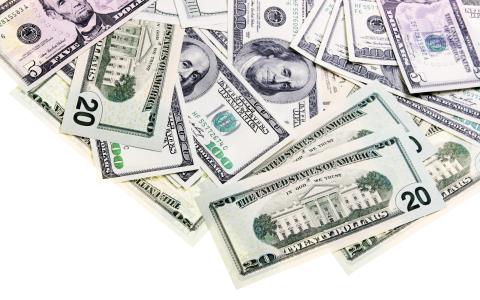
(TheStreet) - Goldman Sachs has boosted its year-end target for the S&P 500, while projecting more gains for the benchmark in 2025, as stocks continue to power higher on the back of solid economic growth, falling Federal Reserve interest rates and expanding corporate earnings.
U.S. stocks are riding a host of tailwinds into the final months of the year, following on from the Fed's dovish pivot on rate cuts in late August and the surprise unveiling of billions in new fiscal stimulus from China, both of which have boosted risk sentiment in markets worldwide.
The S&P 500, which ended the third quarter at an all-time closing high, has risen for each of the past four weeks and seven of the past eight, taking its year-to-date gain past 20.5% as of last Friday.
Stocks are also likely to get further support from the third quarter earnings season, which begins later this week, as well as expanding corporate profits over the final three months of the year and beyond as the economy continues to outperform forecasts.
LSEG data suggest collective S&P 500 earnings for Q3 are likely to grow 5% from last year to around $5.11 billion. That's down from earlier projections of a $5.19 billion tally but still indicates solid momentum for this year and next, with fourth quarter profits expected to rise 12.5%.
Goldman sees solid earnings growth
Goldman's chief U.S. equity strategist, David Kostin, who trimmed his 2024 earnings growth forecast to 8.2% from 8.4% in a note published Friday, still sees that earnings momentum building into next year. He's boosted his profit growth forecast by 5 percentage points to a full-year gain of 11%.
"The upward revision to our 2025 EPS estimate is greater margin expansion," Kostin said, adding that the "macro backdrop remains conducive to modest margin expansion."
The U.S. economy grew at a 3% pace over the three months ended in June and is forecast to expand by around 2.5% over the third quarter, according to the Atlanta Fed's GDPNow forecasting tool. That stronger-than-expected tally puts the U.S. firmly ahead of its developed-market peers.
Kostin lifted his year-end S&P 500 target to 6,000 points, up from a prior forecast of 5,600. The new target suggests a gain of around 4.35% from current levels.
He cites a price-to-earnings multiple of 22 times for the S&P 500, which he sees as "in line with our macro model of fair value" that will remain largely unchanged over the next three months.
For 2025, Kostin pegged the S&P 500 to rise another 300 points, to a year-end target of 6,300, implying a 10% upside from current levels.
Headwinds to the bullish outlook, however, are starting to coalesce following last week's blowout jobs report, which showed 254,000 new hires in September alongside quickening wages gains.
Treasury bond yields are moving firmly higher following the data release, with both 2-year and 10-year notes trading north of 4% for the first time since August, amid concerns of a renewed spike in inflation pressures.
Bond-market headwinds
In fact, 2-year yields topped 10-year yields for the first time since the Fed's 0.5-percentage-point interest-rate cut on Sept. 18, a reinversion of the yield curve could suggest market jitters tied to U.S. inflation risks.
That's also being played out in the commodities market, where prices for copper and other metals are gaining ground on the back of China's stimulus push, the biggest in more than a decade, and the impact of Israel's widening conflict in the Middle East on global oil prices.
Brent crude futures contracts for December delivery, the global pricing benchmark, were last seen $1.79 higher at $76.66 per barrel in early Monday trading. WTI futures for November delivery jumped $1.96 to $76.34 per barrel.
"The Bloomberg Commodity Spot Index is now up 10% from the lows in August, and if commodities continue to surge beyond the highs from mid-May, then spot commodity prices are suddenly in territory not seen since early 2023," said Saxo Bank's chief investment strategist, Peter Garnry.
"Chinese stimulus and Middle East tensions could be the exact cocktail that will cause inflation to linger for longer and prove the market’s current expectations of six US rate cuts by June next year to be too optimistic," he added.
By Martin Baccardax



